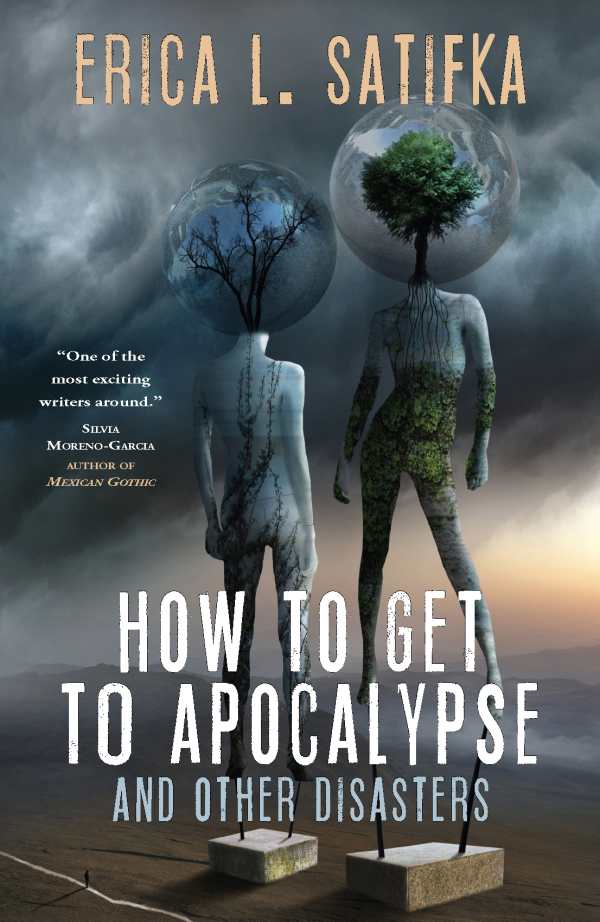How to Get to Apocalypse
And Other Disasters
The death of the world is imminent in Erica L. Satifka’s short story collection How to Get to Apocalypse, which, flecked with cyberpunk details, explores its many possible endings.
Although Armageddon is often projected as an atomic blast or a cataclysmic meteor strike, this collection discovers smaller-scale devastations. In “Lucky Girl,” a woman who’s racked with depression plants herself “in the basement like a root vegetable” after her eleventh suicide attempt. In “Trial and Terror,” villagers practice drawing and quartering straw-stuffed dummies in anticipation of executing criminals. These cruelties may not have the impact of an asteroid, but their cumulative effect is catastrophic. The collection’s exquisite world-building turns on a dime, and each story constructs startling, unique landscapes that are then deconstructed, one mini-apocalypse at a time.
“Sasquatch Summer” stands out; it’s about a worm-eating child’s encounter with a tribe of mythical, black-haired creatures in the forest during a union conflict. As Lou is adopted by the sasquatches and assimilates into their group, he becomes their conduit to the human world, which sees them as filthy beasts. The story includes subversive social commentary about family structures, capitalism, unions, and labor. Its allusions to Indigenous land rights are another layer of social critique. Other stories in the book are as laced with imaginary creatures, languages, and conflicts as this compelling tale is, too.
This insightful, unsettling book balances elegant storytelling with a black sense of humor. Unconventional comparisons create jarring images: in one story, a besieged city’s walls are “studded with endless fields of gemstones all cut into wicked facets,” while elsewhere, a full-time Florida sea god yearns for his family in the oceanless Midwest.
Immersed in viable, plausible speculative futures, How to Get to Apocalypse is an unforgettable collection.
Reviewed by
Claire Foster
Disclosure: This article is not an endorsement, but a review. The publisher of this book provided free copies of the book to have their book reviewed by a professional reviewer. No fee was paid by the publisher for this review. Foreword Reviews only recommends books that we love. Foreword Magazine, Inc. is disclosing this in accordance with the Federal Trade Commission’s 16 CFR, Part 255.

